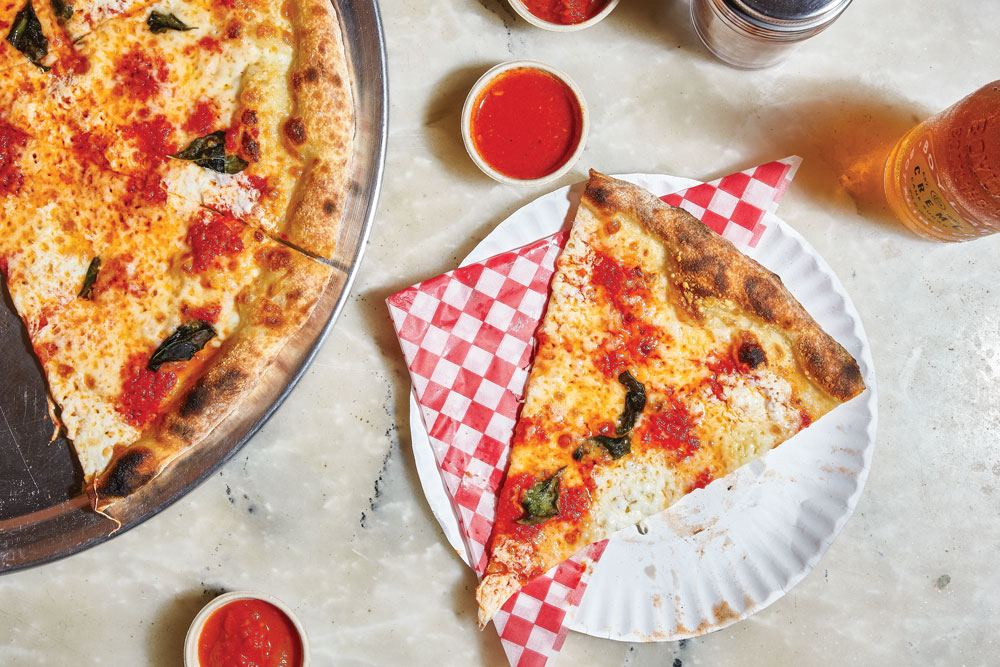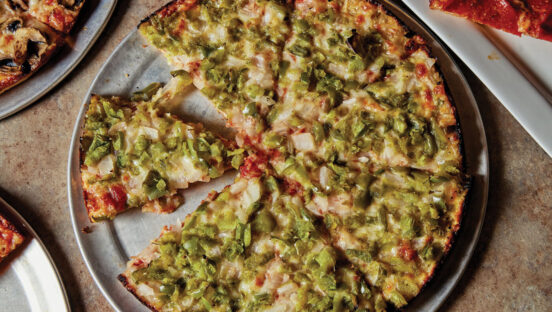Is there any topping more essential in pizza production than mozzarella? From sliced to shredded, smoked to straciatella, the many forms of mozz—not to mention its impressive ability to pair with virtually any ingredient—have surely helped it rise to prime status as Americans’ most-consumed cheese. In fact, Dairy Foods magazine reports that of the 33-plus pounds of cheese each of us consume every year, nearly one-third, 10.8 pounds, is mozzarella.
But are you making the most of this key pizzeria ingredient? We tapped chefs and operators to share their most creative recipe ideas, as well as handy tips on selection and storage, to ensure that you’re stretching (pun intended) this must-have to the max.
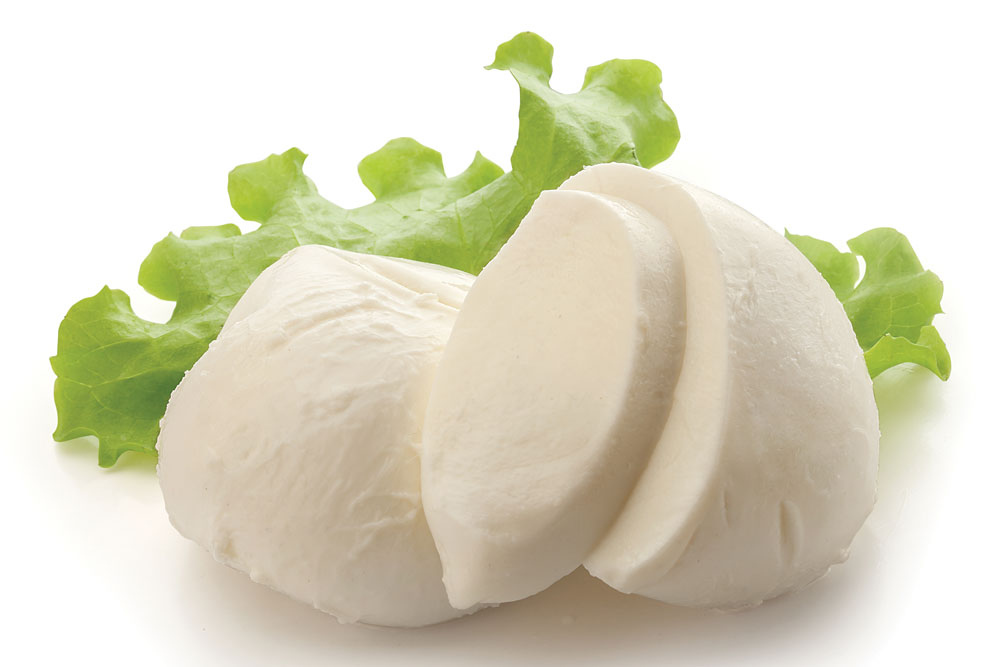
— Donatella Arpaia
Finishing Order
For pizzas alone, mozzarella can be more versatile than you think—simply depending on when it’s added during the cooking or preparation process, or what type is used. “It’s based on the ingredients that are going on the pizza or other item, but it all comes down to a balance of flavors to get the right taste and look,” says Paul Russo, CEO and founder of NYPD Pizza in Orlando, Florida. “Authentic New York pizza requires a blend of mozzarella cheeses to get the correct taste, while the amount of cheese that is used provides the correct balance of flavors. Some pies require cheese on top, while other pies have the cheese on bottom.” Perhaps NYPD’s most creative use of mozz on a pie is its cold cheese pizza, called the Oneonta slice (named after the New York town that made this style famous), which melds cooked cheese, melted cheese and cold cheese.
At the recently opened Sauce Pizzeria in New York City, owner Adam Elzer incorporates mozzarella a bit differently on the Upside Down Cheese pie. “The ingredients go on the dough in reverse: mozzarella first, sauce second, and toppings last,” Elzer explains. “As a result, the cheese bakes directly into the dough; the sauce is slightly sweeter, because it concentrates under the high heat; and the texture is more cohesive.” Elzer asserts that this method—an old-school technique used by iconic pizzerias like Totonno’s in Brooklyn, New York—keeps the cheese from sliding around on the pie. The Upside Down Cheese pie also counts on the right cheese blend: low-moisture, part-skim mozzarella and fresh mozzarella, then finished with a sprinkle of Pecorino for added depth of flavor.
Donatella Arpaia, chef and partner of Prova Pizzabar in New York, believes that when you add your mozzarella depends on the type of mozzarella being used. “For fresh mozzarella, I usually add after the pizza is out of the oven,” she says. “For the pizza that I developed at Prova, there’s a two-step cooking process, so shredded mozzarella goes on after a par-baking, midway through the cooking process.” The lesson: When it comes to mozz, don’t be afraid to play around with your prep and cooking methods to target exactly the right flavor and texture for your pies.
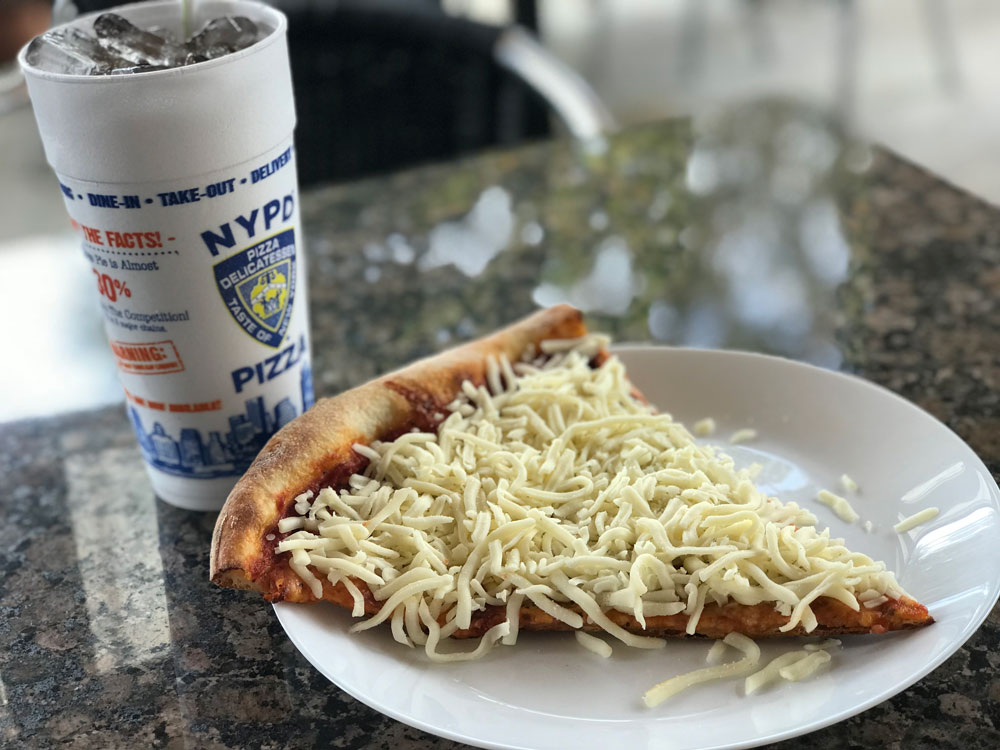
Appetizer Inspo
Mozzarella isn’t just a must-have ingredient for savory dishes. Andy Wittman, corporate chef at Pizza Patrón, a Latin-inspired pizza franchise headquartered in San Antonio, points out mozzarella’s amazing versatility in a wide range of applications. “Everyone loves its mild flavor profile, which plays so well with many different ingredients, but one aspect that is often lost with mozzarella is how well it plays with fruits,” Wittman says. “The slight saltiness really brings out the sweetness in multiple fruits—apricots and figs being two of my favorites.”
One of Wittman’s most delectable dishes can be offered as an appetizer or a hot cheese course. Here’s his step by-step: Working with a good-quality fresh mozzarella, heat a small, seasoned cast-iron skillet over medium-high heat. Once the pan is warm, add in slices of mozzarella in a circle and let them melt about halfway through. Warm some fig preserves in another pan and spoon them over the cheese. Splash on a couple tablespoons of Campari, then sprinkle on julienned, crispy fried prosciutto. “A small sprinkle of julienned basil completes the dish, and I serve it in the skillet immediately, with crispy Italian toast rounds,” Wittman says. “I love the interplay of sweet, salty and bitter. The cheese works to carry the dish, as well as provide texture and a perfect counterpart to all of the flavors.”
Many operators also advocate allowing a fresh, high-quality mozzarella to stand out in premium salads. For these applications, Arpaia recommends using a hearty lettuce that can hold up to mozzarella—think kale or spinach—as a base. “Move away from traditional greens and look to Belgian endive and radicchio; the bitter and hearty leaves complement a rich, milky mozzarella so well,” she adds. “I also love using arugula and butter lettuce, but in these cases, you have to be sure to cut the mozzarella finely.”
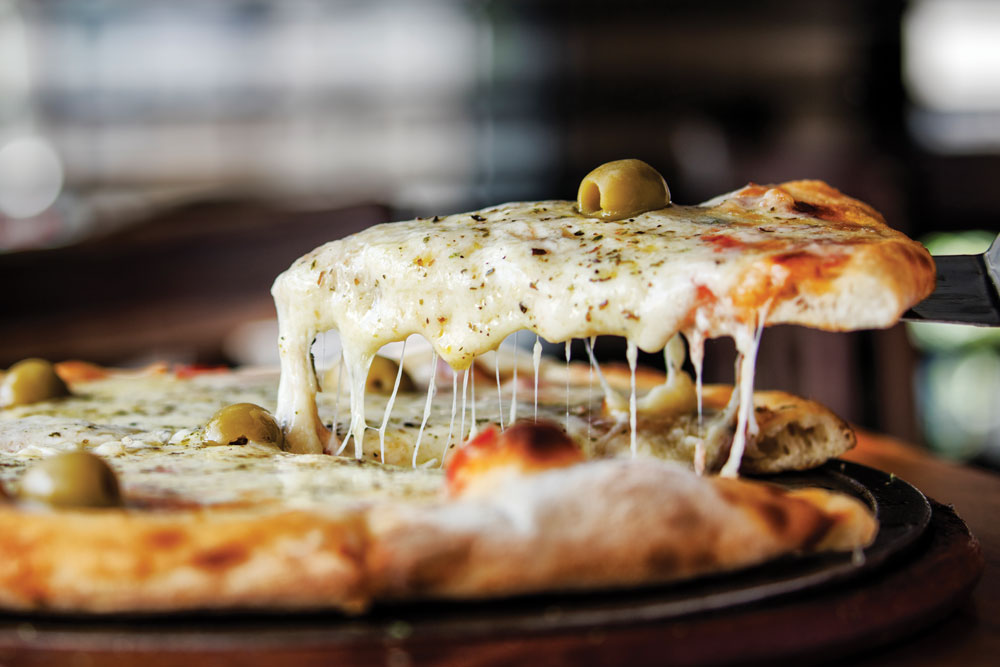
Pairing Pointers
Arpaia equates mozzarella to the “little black dress” in a woman’s closet, thanks to its ability to pair so effortlessly with so many ingredients. But you can help narrow the field of pairing partners by looking at larger food and ingredient trends, as well as working seasonally. “Some of the protein toppings that are exciting consumers today are pork belly, sopressata, pancetta and pulled pork,” Arpaia notes. “If you’re looking for emerging nonprotein toppings, the fastest-growing options are kale, cranberry, Brussels sprouts, heirloom tomatoes, Calabrian chili peppers, baby arugula, butternut squash and pumpkin.”
In pasta dishes, Arpaia’s favorite partners for mozzarella are vegetables, from nightshades like zucchini and eggplant to autumnal varieties. “I really have not found a vegetable that mozzarella doesn’t pair well with,” she says. Meanwhile, for calzones, she recommends incorporating fresh ricotta, tomatoes, fresh herbs and spinach. “As for meats, I think pork products, like pancetta and guanciale, go really well with mozzarella in a calzone,” Arpaia adds. “You can also get out of the spinach calzone rut by adding vegetables according to season, like acorn squash, kale or Brussels sprouts—and, in the summer, of course, gorgeous tomatoes.”
Tracy Morin is PMQ’s senior copy editor.



